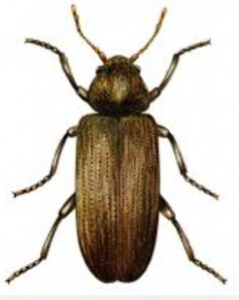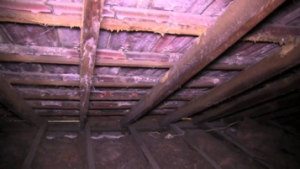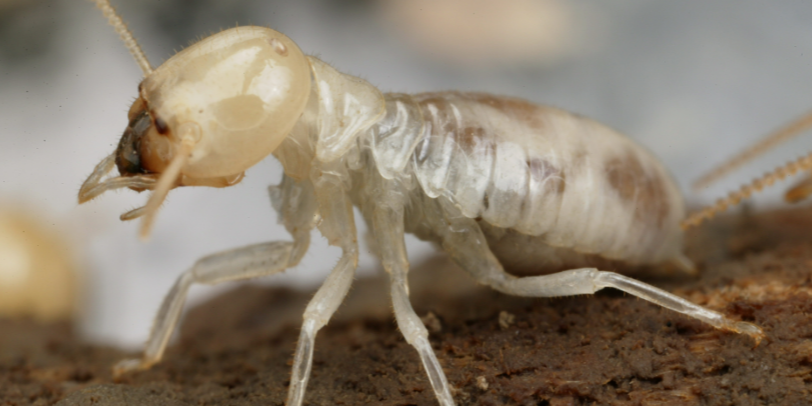Despite recent trends, the vast majority of homes in Perth still contain significant amounts of wood. Wood is a spectacular product and has been the backbone of the construction industry since Adam met Eve. Like all great assets, it needs to be maintained, protected, monitored and sometimes even replaced. There are several significant pests and issues that property buyers and sellers need to be acutely aware. These include:
- Termites
- Borers
- Delignification
- Wood Fungi
- Tradesmen
Making sure your clients are aware of these issues and that appropriate due diligence has been undertaken prior to buying or selling can be critical.
Termites
We all know about these pests but here are some critical points for clients to consider:
- Termites are almost certainly the most well-known timber pests. Found globally, except Antarctica, these wood-eating creatures are so destructive that they can destroy a home’s structural integrity in mere months.
- Termite colonies are tightly integrated and can grow in size that reach several million. These colonies are defined as superorganisms. Essentially, each individual termite is fully committed to the success of the larger social order. That is why a colony of termites can create so much devastation; they are all committed to the success of the colony.
- It would be nice to think that a concrete slab or a brick exterior would be more than sufficient to stave off an invasion of termites. Sadly, such thinking would be flawed. Termites are expert invaders and can find any point of entry into a property– especially when they happen to have a nearby underground colony that places the property within easy striking distance of their foraging excursions.
- Termites can gain access through joints in the brick mortar and other holes in your brick construction; weep holes can be a particular concern. If there are any cracks in your concrete slab, they will locate them. Penetrations in that slab often provide access to electrical wires or plumbing features, which provide avenues for a termite excursion. In other instances, termites simply gain access through concealed wall frame entry points where they begin to do their damage to the framing timbers.
- Treatment Options – When chemicals are used, pest companies place treatment barriers designed to prevent further excursions into the property. These treatments are applied around the entire perimeter of the property, and are designed either to repel termites or kill them on contact. Many pest companies recommend the fatal chemicals, since repelling termites often causes them to seek other avenues into the home.
- To deal with the termites already present in the building, another solution is helpful. This requires intercepting the insects by using baiting systems. Bait boxes are placed at the termite activity location to draw the colony to an alternative source of food. Over the course of several months, the colony will die off and pose no more risk to the home. Interception and baiting can also be used outside of the home, utilizing underground monitors that look for signs of termite presence. Once detected, the area is baited so that the colony can be destroyed.
Wood Borers
There’s another type of insect that can also pose a serious risk to your property. The wood borer has a unique way of doing its damage and involves a process that can take several years to complete. Adult beetles lay eggs in timber cracks or holes. Those eggs become larvae that then chew their way through the wood over the course of several years. As they feed and grow over time, they mature to the point where they are ready to become adults, and enter a pupa stage. When they complete that, they chew their way out of the timber, emerging in their final, flying adult forms – and begin the process anew.
 This, of course, makes them extremely hard to detect, and impossible for the average homeowner to manage. They do leave signs of their presence – holes in wood, dead insects, and so on, but even those can be difficult to locate if you’re not looking for them. Often times, homeowners are not aware of the problem until adults emerge, and by then the damage can already be done.
This, of course, makes them extremely hard to detect, and impossible for the average homeowner to manage. They do leave signs of their presence – holes in wood, dead insects, and so on, but even those can be difficult to locate if you’re not looking for them. Often times, homeowners are not aware of the problem until adults emerge, and by then the damage can already be done.
Chemical Delignification
Though the term is not as well-known as some of these other timber pests, the effects of chemical delignification are likely to be recognized by many Perth property owners. It is caused by the deterioration of the lignin substance contained within all plants, including the trees used to produce wood utilised in building construction.
 Lignin is the organic substance that makes up much of the space between the cells in timber. It provides the strength and hardness that makes wood such an invaluable construction tool and is considered the glue that helps to keep all those wondrous timber fibres together. The problem is that lignin is not impervious to harm. Various chemicals can create a process that breaks down this organic substance, weakening the bond that holds the fibres together. That leads to the process known as chemical delignification, which causes wood to become soft and appear as though it has hair. This is actually the result of those timber fibres separating from one another.
Lignin is the organic substance that makes up much of the space between the cells in timber. It provides the strength and hardness that makes wood such an invaluable construction tool and is considered the glue that helps to keep all those wondrous timber fibres together. The problem is that lignin is not impervious to harm. Various chemicals can create a process that breaks down this organic substance, weakening the bond that holds the fibres together. That leads to the process known as chemical delignification, which causes wood to become soft and appear as though it has hair. This is actually the result of those timber fibres separating from one another.
The cause of this effect can be either salt from the sea – carried aloft in the wind and deposited on rooftops miles inland-or chemicals released by pollution from cars and factories. These chemicals attack untreated timber, breaking down the lignin over many years. That leads to structural integrity issues that must be resolved with reconstruction or, in less severe cases, treatment of the affected timber.
Timber Decay
Fungal infections within properties are a more common occurrence than most homeowners might imagine, and they can be every bit as destructive as termites and other pests. They are caused when wood moisture levels rise and exceed 25% of equilibrium by content, as those higher levels of water provide an ideal germinating environment for the fungal spores that get carried along on the wind and deposited on wooden structures.
Whether it is brown rot, white rot, or some other variation of wood-consuming fungus, a colony of these organisms can quickly grow in an affected area of timber and create many of the same effects seen with other timber-attacking creatures and reactions. The wood’s structural integrity comes under direct assault, and cracks, fraying, and weakness can come quickly. In short order, everything from the roof to the floorboards could suffer serious damage, leaving you with thousands of dollars in repair and replacement costs.
Tradesmen
Some tradesmen can be the biggest pest of all for property owners. Every week Houspect WA inspects a large number of newly constructed homes where wooden roof frames have been incorrectly constructed and do not meet the National Construction Code or the properties unique Engineering requirements. Roof frame defects are almost always structural defects. A significant number of existing homes have also been adversely impacted by errant tradesmen. Regularly identified issues:
- Inappropriately constructed roof frames
- Tile to metal roof conversions and the failure to incorporate appropriate roof tie downs to support the lighter metal roofs
- Skylights, chimneys, air conditioners and installations where critical roof timbers are simply “removed” or “modified” by tradesmen to make way for the new installations
- Inappropriate renovations to roof frames – often to create storage areas
Conclusion
Wood is a magnificent material but it needs to be maintained, protected, monitored and sometimes even replaced. Before you sell or buy a property you need to check the wood. Wood can be adversely impacted by pests, of all types, which can significantly defer, delay or negate proposed property settlements.
Houspect WA Building Inspectors are all Registered Builders and check wood. In Perth we partner with Rocky Pest, a licenced pest inspection and fumigation company servicing the entire metropolitan area, who check wood for non-human pests. Make sure you get your wood checked by calling Houspect WA so we can organise our Building Inspectors or Rocky Pest to check your wood!







